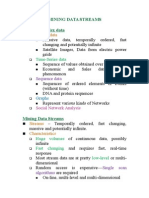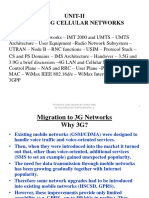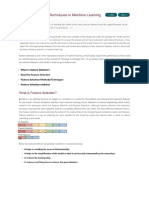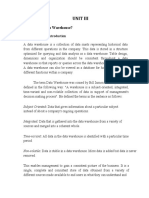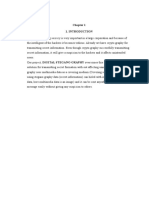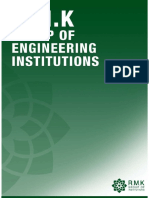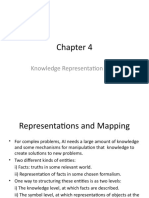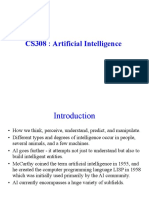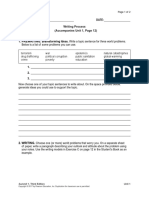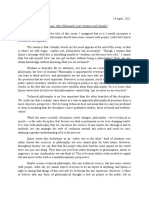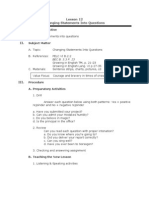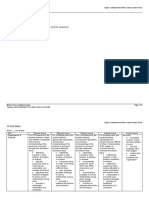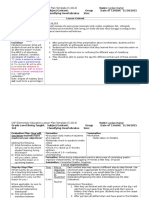0% found this document useful (0 votes)
387 views18 pagesKnowledge Representation Issue
This chapter discusses knowledge representation issues in artificial intelligence. It describes two levels of knowledge - the knowledge level containing facts, and the symbol level containing representations of knowledge level objects. Representation mappings link facts to representations and vice versa. Different approaches to knowledge representation are discussed, including simple relational knowledge, inheritable knowledge using frames/slots, inferential knowledge using logic, and procedural knowledge for accomplishing tasks. Issues like attribute relationships, granularity of representation, and representing sets are also covered.
Uploaded by
Ankit RajCopyright
© © All Rights Reserved
We take content rights seriously. If you suspect this is your content, claim it here.
Available Formats
Download as PDF, TXT or read online on Scribd
0% found this document useful (0 votes)
387 views18 pagesKnowledge Representation Issue
This chapter discusses knowledge representation issues in artificial intelligence. It describes two levels of knowledge - the knowledge level containing facts, and the symbol level containing representations of knowledge level objects. Representation mappings link facts to representations and vice versa. Different approaches to knowledge representation are discussed, including simple relational knowledge, inheritable knowledge using frames/slots, inferential knowledge using logic, and procedural knowledge for accomplishing tasks. Issues like attribute relationships, granularity of representation, and representing sets are also covered.
Uploaded by
Ankit RajCopyright
© © All Rights Reserved
We take content rights seriously. If you suspect this is your content, claim it here.
Available Formats
Download as PDF, TXT or read online on Scribd
/ 18
